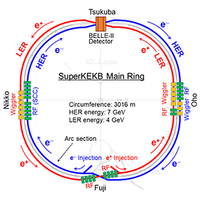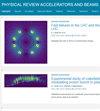Machine-learning-based pressure-anomaly detection system for SuperKEKB accelerator
IF 1.8
3区 物理与天体物理
Q3 PHYSICS, NUCLEAR
Physical Review Accelerators and Beams
Pub Date : 2024-06-20
DOI:10.1103/physrevaccelbeams.27.063201
引用次数: 0
Abstract
This study developed a pressure-anomaly detection system utilizing machine learning for the vacuum system of the SuperKEKB accelerator. The system identified abnormal pressure behaviors among approximately 600 vacuum gauges before triggering the conventional alarm system, facilitating the early implementation of countermeasures and minimizing potential vacuum issues. By comparing the recent pressure behaviors of each vacuum gauge with the previous behaviors, the program detected anomalies using the decision boundary of a feed-forward neural network previously trained on actual abnormal behaviors. Realistic regression models for pressure data curves enabled a reasonable prediction of the causes of anomalies. The program, implemented in python, has been operational since April 2024. Although based on a rudimentary machine-learning concept, the developed anomaly detection system is beneficial for ensuring the stable operation of large-scale machines, including accelerators, and is helpful in designing systems for fault detection.

基于机器学习的超级 KEKB 加速器压力异常检测系统
这项研究为 SuperKEKB 加速器的真空系统开发了一种利用机器学习的压力异常检测系统。该系统能在触发传统警报系统之前,识别出约 600 个真空计的异常压力行为,从而便于及早采取应对措施,并将潜在的真空问题降至最低。通过比较每个真空计最近的压力行为和以前的行为,该程序利用先前根据实际异常行为训练的前馈神经网络的决策边界来检测异常。压力数据曲线的现实回归模型能够合理预测异常的原因。该程序使用 python 实现,自 2024 年 4 月起开始运行。虽然开发的异常检测系统是基于初级的机器学习概念,但它有利于确保包括加速器在内的大型机器的稳定运行,并有助于设计故障检测系统。
本文章由计算机程序翻译,如有差异,请以英文原文为准。
求助全文
约1分钟内获得全文
求助全文
来源期刊

Physical Review Accelerators and Beams
Physics and Astronomy-Surfaces and Interfaces
CiteScore
3.90
自引率
23.50%
发文量
158
审稿时长
23 weeks
期刊介绍:
Physical Review Special Topics - Accelerators and Beams (PRST-AB) is a peer-reviewed, purely electronic journal, distributed without charge to readers and funded by sponsors from national and international laboratories and other partners. The articles are published by the American Physical Society under the terms of the Creative Commons Attribution 3.0 License.
It covers the full range of accelerator science and technology; subsystem and component technologies; beam dynamics; accelerator applications; and design, operation, and improvement of accelerators used in science and industry. This includes accelerators for high-energy and nuclear physics, synchrotron-radiation production, spallation neutron sources, medical therapy, and intense-beam applications.
 求助内容:
求助内容: 应助结果提醒方式:
应助结果提醒方式:


